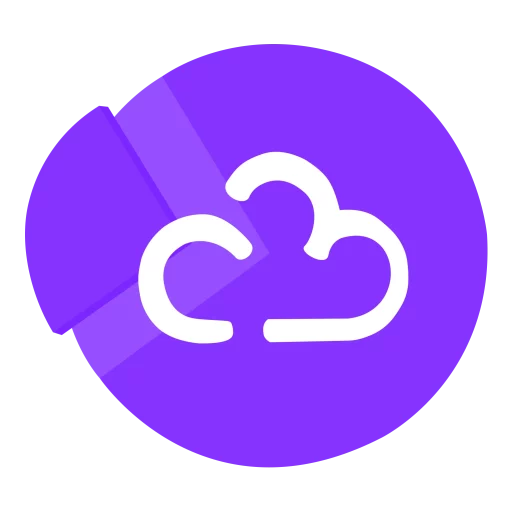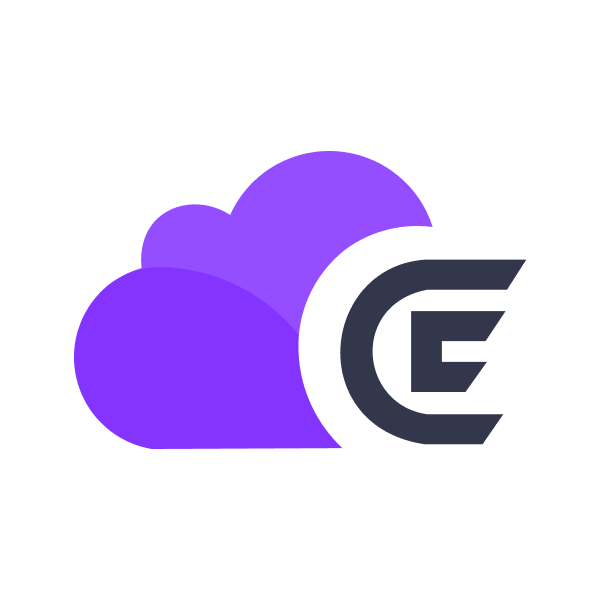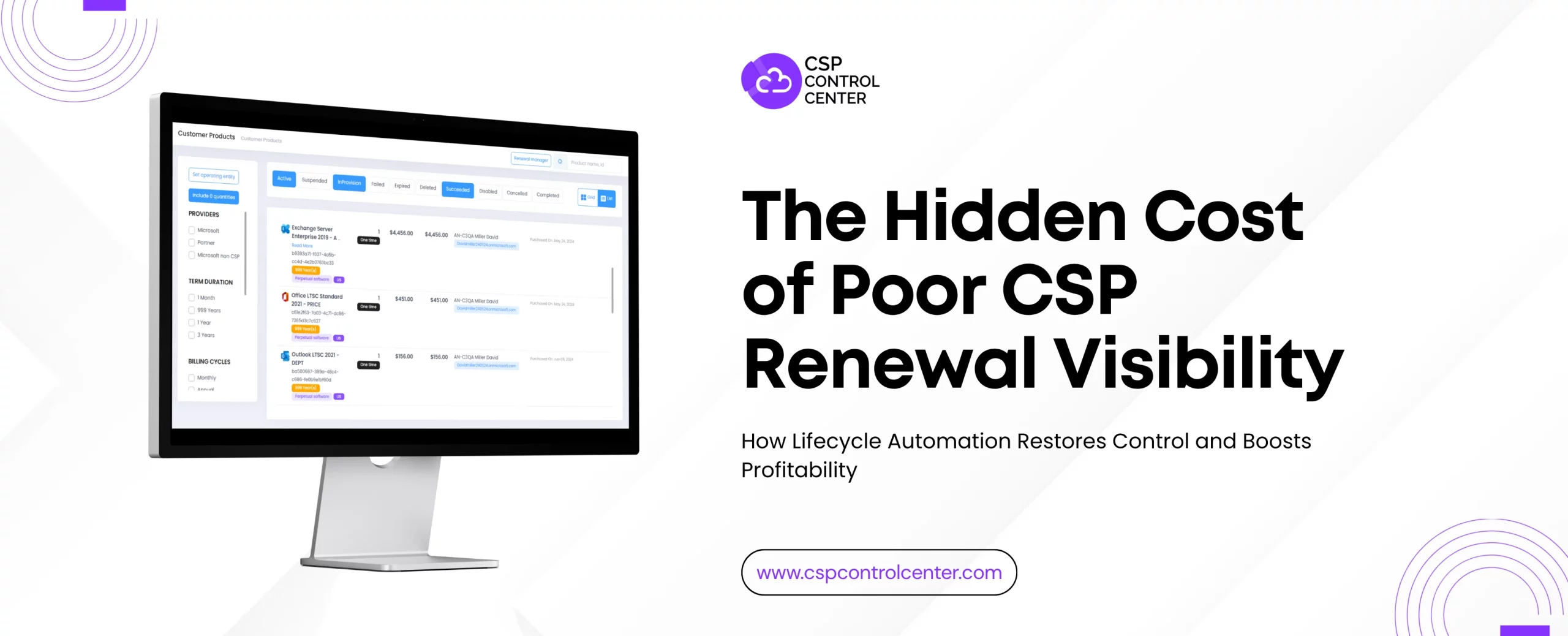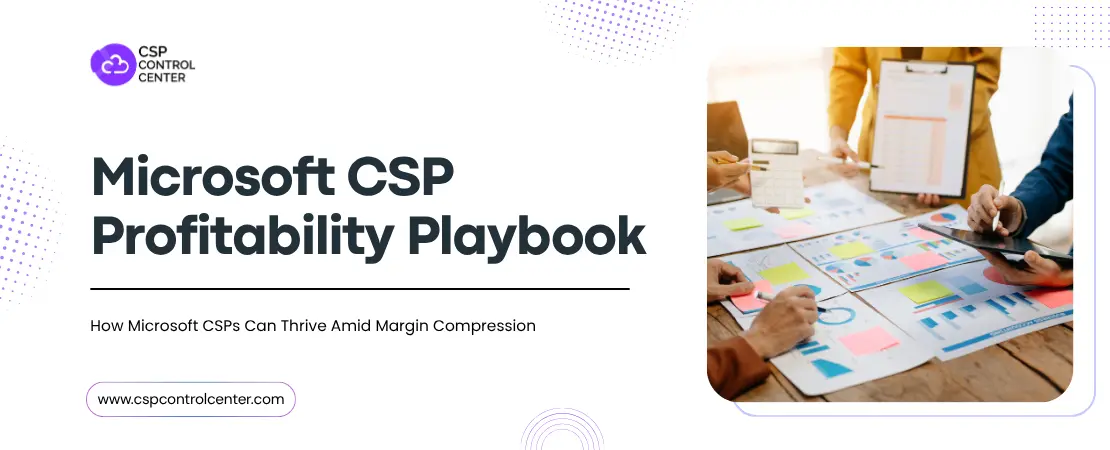What is Microsoft CSP Program?
The Cloud Solution provider (CSP) Program allows customers to consume Microsoft public cloud subscriptions, such as Azure, Office365, Enterprise Mobility Suite (EMS) and Dynamics CRM Online through purchase via Microsoft Partners. Partners in CSP program employ committed in-product tools to support, manage, and directly provision the subscriptions of their customers. Partners here can seamlessly opt to package their services, products, and tools, and collate them into an annual or a monthly customer bill. It is hence imperative to understand the O365 billing in this CSP model, to ensure the smooth functioning of your business. More often than not, businesses are in a dilemma with the billing structure associated with the CSP model, which can cause disruptions in their operations. To begin with, you will need to understand your invoice for O365. The invoice available in your partner center provides information about the charges of all customers, all products, and costs across the program.Types of Invoice
Microsoft provides invoices for usage-based charges and License-based charges which can be downloaded from your partner center. Separate invoices for services that incur a one-time charge such as Marketplace and Azure RI. The invoices generated by Microsoft billing system are provided in the form of PDF files and reconciliation files. The dispatch of these files varies from invoice to invoice. For instance, the partner who has purchased O365, will receive two reconciliation files and one invoice PDF covering the charges for both. Suppose the partner has made a purchase of Azure Plan, O365, Marketplace, and/ or Azure RI. In that case, the Microsoft billing system provides the partner with two reconciliation files and one invoice PDF for costs incurred by Azure and O365. The partner receives another reconciliation file and invoice PDF from the Partner Center, covering the costs for Azure Plan, Marketplace, and Azure RI. Let us consider a scenario wherein the partner has made purchases in multiple currencies such as O365 in USD and Azure RI in EUR. Microsoft Partner Center will provide the partner with one reconciliation file and one invoice PDF covering the costs for Azure RI in EUR. The Microsoft Partner Center generates another reconciliation file and invoice PDF, which depicts the charges for O365 in USD.Locate your Bill
CSP PDF invoice will be available under the billing page of your Partner Center’s dashboard. You will also be able to locate your reconciliation files, spending trends, and billing history on this page.- Sign in to your account
- Select the billing option from the dashboard
- Click or select the billing information you want to download
Understanding reconciliation files
Microsoft provides you with reconciliation files which depict the details of your charges and can be downloaded with the PDF invoice. The reconciliation files generated by the billing system includes subscription and customer identifiers, which can be utilized to create invoices for customers. Microsoft Partner Center provides a detailed invoice PDF and reconciliation file covering the charges for license-based reconciliation files. However, many partners fail to understand the terminologies included in the O365 reconciliation files. Though it is important to automate your CSP billing, it is also important to have a thorough understanding of the terms in the O365 reconciliation files.Understanding the Terminologies in license-based reconciliation files by Partner Center for O365
- Partner ID: The GUID format unique identifier for particular billing entries. This is not necessary for reconciliation.
- Customer ID: The GUID format unique Microsoft identifier for customers.
- Customer Name: The name of the organization of a customer, as depicted in the Partner Center. This is a highly important factor to reconcile your invoices with your information in the system.
- MPN ID: This is the ID used for identifying MPN of the CSP partner. It helps to itemize or sort by the partner.
- Reseller MPN ID: This ID is utilized for identifying MPN of reseller of record for a subscription.
- Order ID: It is the unique identifier in the Microsoft billing platform for an order. Can be useful when contacting support to identify the order. Not employed for reconciliation.
- Subscription ID: Specific identifier in Microsoft billing application for a subscription. The subscription can be identified when accessing support—not utilized for reconciliation. This value is not similar to the Partner Admin Console’s Subscription ID.
- Syndication Partner Subscription Number: It is a unique code for subscriptions. A consumer can subscribe to the same plan multiple times. This column is critical for the study of the reconciliation document. This field maps Partner Admin Console’s Subscription Number.
- Offer ID: This is the Unique code for identification. It provides standard Identification of the offer, as specified in the price list. This value does not match the pricelist Offer ID.
- Durable Offer ID: Standard identification of the durable offer, as prescribed in the price list. This value matches with the pricelist Offer ID.
- Offer Name: The name of the service which is opted by the partner or customer. This name is often the same as defined in the price list.
- Subscription Start Date: This depicts the start date of the subscription. The time on this date is often set as the beginning of working hours in the day. The start date is usually set on the day after the order was placed. This date also assists in monitoring whether a customer is within his or her subscription period, or if their subscription needs renewal or if it already has been renewed.
- Subscription End Date: This depicts the end date of the subscription. The time on this date is often set as the beginning of working hours in the day. The subscription end date is set at 12 months from the subscription start date or 12 months from the subscription renewal date. At the time of renewal, the prices are updated to reflect in the current price list. Prior communication with the customer might be required in advance of the automated renewal of service.
- Charge Start Date: This depicts the day when you will start incurring charges. The time is set to be the initiation of working hours in the day. This is utilized to calculate pro-rata charges or daily charges when a consumer opts for different license numbers.
- Charge End Date: This depicts the day when you will stop incurring charges. The time is set to be the initiation of working hours in the day. This is utilized to calculate pro-rata charges or daily charges when a consumer opts for different license numbers.
- Charge Type: This depicts the type of adjustment or charge.
- Unit Price: Price per license, as reported at purchase in the pricelist. Make sure that this reflects the information retained during reconciliation within your billing system.
- Quantity: This depicts the number of licenses issued. Make sure this reflects the information retained during reconciliation within your billing system.
- Amount: This depicts the total price of the quantity issued. It is used to match the amount calculation with the calculation of this amount for your customers.
- Total Other Discount: This is the total discount levied on the charges. Product licenses included with new subscriptions viable for incentives or licenses with competency or MAP will also consist of a discount charge in this section.
- Subtotal: This indicates the total charges before tax. It verifies if the expected total matches the subtotal, in the scenario of a discount.
- Tax: This depicts the amount levied as tax. It is often based on specific circumstances and the industry’s tax rules.
- Total for Customer: This reflects the total amount after tax. It verifies if the tax is levied in the bill.
- Currency: This indicates the currency type. Each of the billing invoices will have only one type of currency. You should check this against your first invoice, and after any updates in the billing platform.
- Domain Name: This depicts the domain name of the customer. This section might remain blank until the 2nd billing cycle. This section cannot be utilized as an identifying ID for customers. The customer can also choose to make changes to their domain name via the Office 365 portal.
- Subscription Name: This shows the nickname for the subscription. If a nickname is not assigned, the Partner Center employs the Offer Name.
- Subscription Description: This depicts the subscription name, similar to the one mentioned in the price list. This name is similar to the Offer Name.
- Billing Cycle Time: This depicts the frequency of the billing cycle. It can be either one-time or recurring.

 CSP Control Center
CSP Control Center
 CloudEvents
CloudEvents


